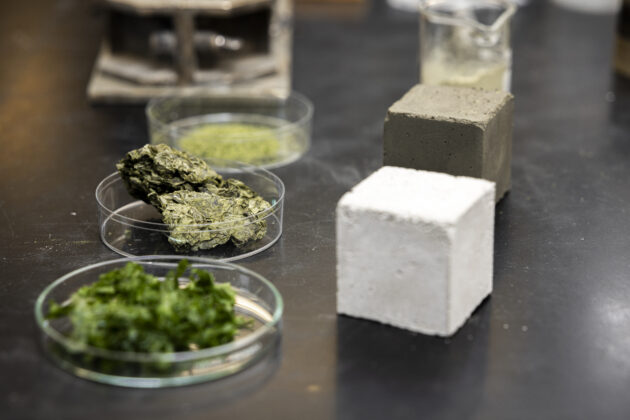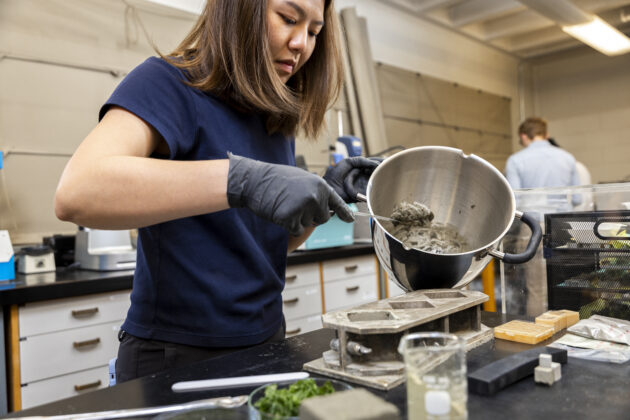Researchers have developed a novel solution for trapping carbon in concrete by blending a sustainable, easy-to-grow green seaweed into the industrial batter that makes cement, all without reducing its strength.
Scientists from the University of Washington and Microsoft Research used machine learning to expedite their experimentation, coming up with a solution that lowered the cement’s global warming impacts by 21%
A study on their work is publishing online today in Matter, a science journal focused on materials science.
The research was led by Eleftheria Roumeli, a UW assistant professor in materials science and engineering, and Kristen Severson, a principal researcher with Microsoft Research. Roumeli previously developed an algae-based plastic that biodegrades in nature as quick as a banana peel.
The scientists wanted to tackle concrete given that it’s responsible for between 8-11% of global carbon emissions. Cement, the key component of concrete, contributes to nearly all of that climate burden.
There are efforts worldwide to curb concrete’s carbon footprint by using clean energy in generating the heat needed to product cement and by swapping in different ingredients to bind the cement such as industrial wastes like fly ash and furnace slag.

Roumeli and Severson turned to the seaweed given that it pulls carbon from the air and locks it away during photosynthesis. Others have tested the use of smaller algae, but the researchers were the first to choose a macroalgae called Ulva as their material because it has a more robust cellular structure they suspected could help reinforce the cement.
The scientists dehydrated the seaweed before incorporating it and were able to successfully use much higher amounts in the cement than previous demonstrations.
This new strategy “is quite the leap from traditional approaches,” Roumeli said.
One of the difficulties in developing lower-carbon cement is the time required to make sure it’s strong enough to be used in the construction of buildings, bridges and other infrastructure. Concrete gains strength over time, leading researchers to typically test the material after 28 days.
To speed up that process, the scientists developed a machine learning model that could predict how much stronger a sample would get over four weeks, allowing them to abandon underperforming strategies earlier in the process. The approach shaved 112 days off of experiment time.
“[T]his work establishes a framework with the potential to accelerate the design of sustainable cement with feasible experimental resources while satisfying critical performance requirements,” the authors wrote.
The next step, Roumeli told GeekWire, is to draft “design rules” to guide other researchers who want to quickly develop green cement mixtures that use locally based materials in lieu of the seaweed used in their effort.
Other authors of the paper were Meng-Yen Lin and Paul Grandgeorge, who did the research as a graduate student and a post-doc, respectively, in Roumeli’s lab. The publication is titled “Closed-loop optimization using machine learning for the accelerated design of sustainable cements incorporating algal biomatter.”
Read the full article here










